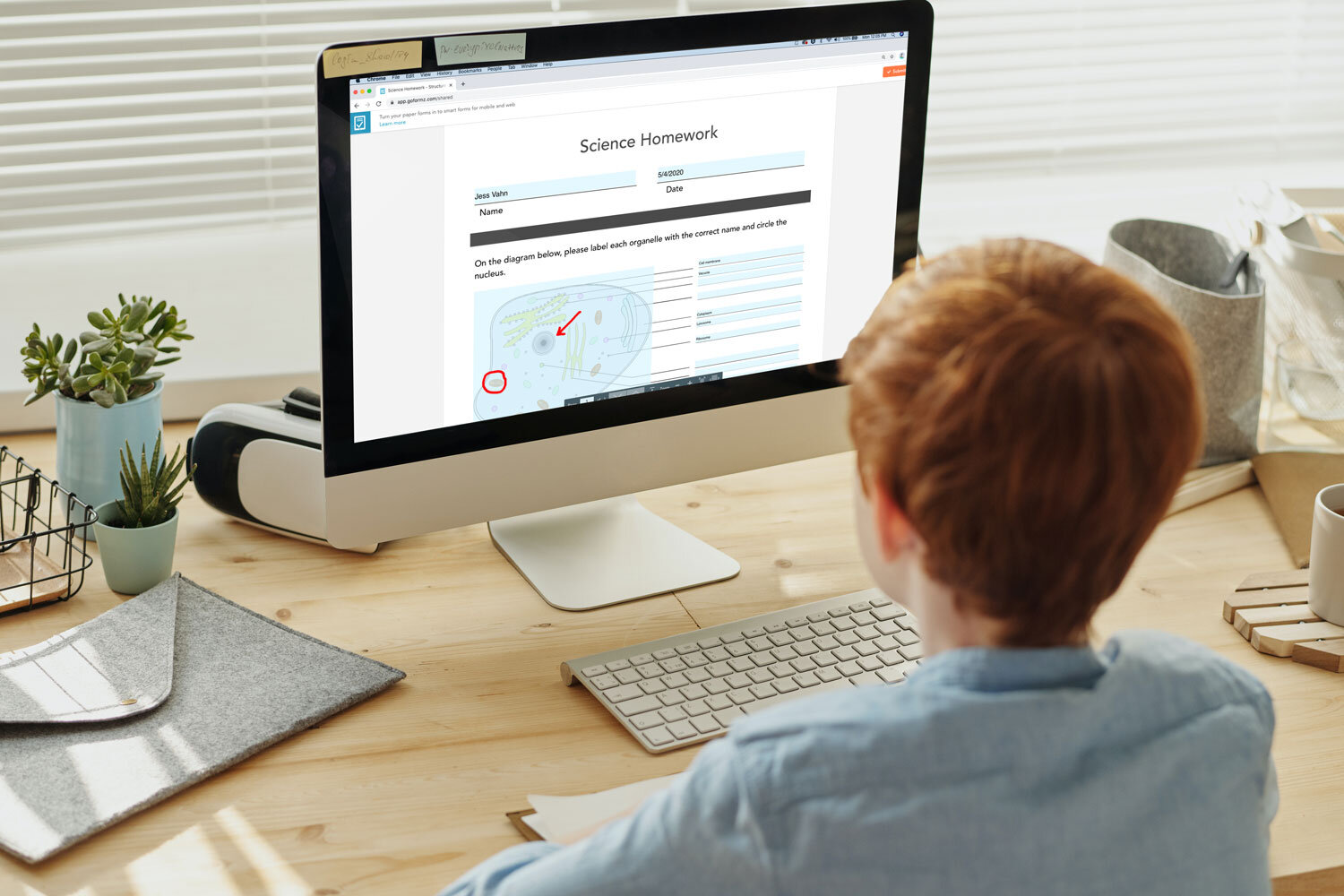5 Creative Ways to Make Digital Homework Assignments More Engaging
Spice up your digital homework assignments with interactive, dynamic digital fields and features.
Digital homework assignments provide a seamless, efficient means of communication and student engagement. With GoFormz, teachers can easily digitize homework assignments for use on computers, allowing students to complete assignments no matter their location, and are instantly available for review and grading as soon as they are completed.
Leveraging digital forms to create and share homework enables educators to get creative and augment their assignments with engaging, digital features. With form logic, digital homework assignments can dynamically guide and engage students, altering in response to input data and specific form actions (e.g. checking a checkbox or leaving a form field empty). Below we’ve outlined five creative ways teachers can make their digital assignments all the more engaging for their students.
Leverage visual fields, like Images and Sketches
Inspire students to get creative, with easy to use visual fields, students can easily input their own Images and Sketches. With Image fields, students can input photos of creations and projects completed away from the classroom. For example, a student might upload a picture of a science project completed at home. With Sketch fields, teachers can ask students to include a drawing relevant to their lesson or to circle areas of an image. For example, a student might be asked to circle a specific organelle within a diagram of a cell.
Distance learning ProTip: Visual fields, like Images and Sketches can help teachers keep their students engaged despite the limitations of distance learning. Ask students to complete a project or experiment with their parents and upload a picture of their finished product, or have students draw how they are feeling that day – the options are endless!
Dynamically change the color of fields
Your digital assignments can also be equipped with Conditional Logic, allowing teachers to configure their form fields to dynamically change color in response to entered data and form actions. For example, within a digital Reading Log, if a student’s total reading hours are less than the amount assigned, the ‘Total hours read’ field could remain red. If the student were to then complete the assigned number of hours, the field could then turn green.
Distance learning ProTip: Conditional Logic and Dynamic Field Properties (e.g. a field’s Background Color, Required status, or visibility) allow teachers to guide students through their assignments, even as they learn remotely from their homes.
Dynamically make new fields appear
Your digital homework assignments can even make additional fields appear in response to a student’s data entry or actions. For example, additional Text fields could be made Visible in response to a student checking a Checkbox that signifies they would like to complete an extra credit question.
Provide further feedback and instructions based on data input
Form logic also allows educators to provide additional instructions in response to selected fields. For example, a teacher might want to present their students with options for how they wish to complete a project, with the options of a presentation, a video, or a written report. If a student were to check a Checkbox or select a Drop Down item signifying they wish to create a video for their project, a set of instructions could then be made visible based on their selection.
Distance learning ProTip: Dynamically making additional instructions available to students keeps your digital assignments clear and specific to their project needs. Rather than inundating students with various sets of instructions, dynamically presenting only the instruction they will need prevents confusion while learning from home.
Fill in the blank image labels
Finally, educators can upload digital homework assignments featuring diagrams and other educational images, for students to annotate using Text fields. For example, a diagram of the human body could be equipped with Text fields, prompting students to enter the name of different organs, bones, and more.
For more ways to leverage digital forms within your classroom (or within your distance learning curriculum) check out the top ten digital teacher forms here. Or, explore how digital forms can assist students and teachers making the transition to distance learning and the digital classroom here.



